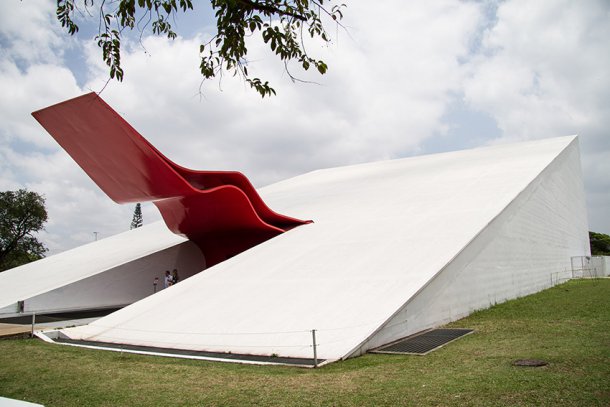"O século XXI é do sul"
Publicado23 Fev 2015

Imagem: Maycon Amoroso. Auditório Ibirapuera, Parque Ibirapuera São Paulo.
Marieke van Hal, directora da Biennal Foundation, uma plataforma internacional para reflexão sobre o tema, historiadora de arte e curadora, em entrevista ao site Contemporay and, afirma que "o século XXI é do sul", referindo-se a vários eventos que ganham progressiva importância mundial em África ou na América Latina.
C&: There are increasingly conversations around South–South connections in the art world. What are your observations of this within the framework of a “biennale”?
MvH: The North–South dialectic of post-colonialism is not over, but new, multilateral relations are emerging that reflect South–South dialogues in which the potential of exchange circumvents the North. We see this in the economic and political arena, and also in our professional field. But I’m not sure it’s something new. The history of biennials mostly comes from a northern perspective, whereas the southern perspective remains rather unexplored.Anthony Gardner, who participated in our World Biennial Forum, and Charles Green, are doing pioneering academic research in this. In a recent essay they studied biennials of the non-aligned nations of the South, and their conclusions show that many of the early so-called southern biennials sought to redirect the axis of cultural and economic influence away from the north. Most well known to us in this perspective is the Havana Biennial that has always focused its attention on artists from the south. Gardner and Green argue that it was an insistence on regionalism that has characterized most southern biennials, as well as a focus on horizontal axes of dialogue and engagement across a region. Today, an interesting case in this context is the Jogja Biennale in Yogyakarta, Indonesia. Since 2011, the Jogja Biennale has been focused on encounters with nations in the equatorial area. The next edition (2015) is in partnership with Nigeria.
C&: Biennials are increasingly criticized with regards to their lack of content. Although they gather a high number of artists, it doesn’t necessarily mean that the exhibition transports a deeper or relevant message. What is your take on this?
MvH: The 31st Bienal de São Paulo, the host of our World Biennial Forum No. 2, could serve as an argument for the opposite view. This thought-provoking biennial conveyed a highly important message especially to Brazilian audiences, showing them what their biennial could also reflect, tell, or do. The Bienal de São Paulo incorporated a reaction to some recent editions of established biennials that returned to the museum as a model. This biennial was conceived during the mass protests and social uprisings in Brazil last year and invited artists to show the struggles of society, not only in Brazil, but also in other parts of the world. An important question was posed: how can art works, and the art world as a whole, reflect the demand for a turn in social, political, and economic environments? In a global art world where market forces strongly dominate, this curatorial team took a radical left-wing stance and proved that the biennial is not necessarily neoliberal. This was also very clearly reflected in the choice of artists.
A entrevista completa, aqui
